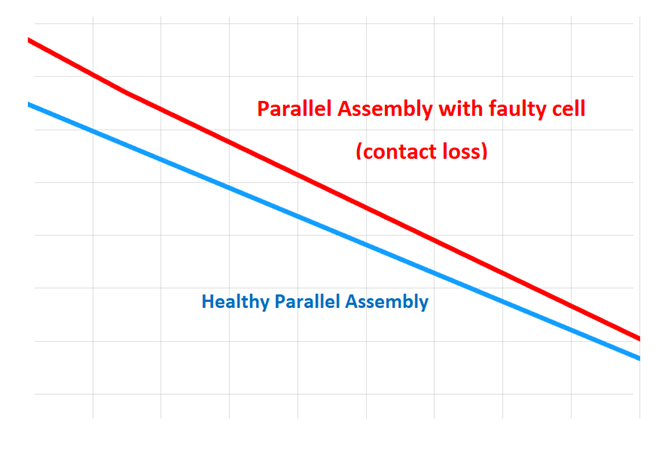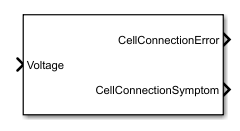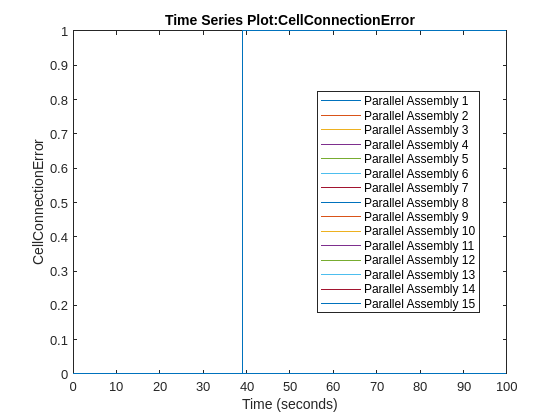Battery Cell Contact Monitoring
Libraries:
Simscape /
Battery /
BMS /
Protection
Description
The Battery Cell Contact Monitoring block monitors the state of contact between the cells of a battery. Algorithms for cell contact monitoring are essential for the safety, performance, and reliability of battery systems, especially in a battery pack with many cells.
This block first checks for cell contact loss symptoms in parallel assemblies. If the block detects a symptom, and this symptom lasts for longer than the value of the Qualification time (s) parameter, then the block reports the symptom as a loss-of-contact error.
You can switch between continuous and discrete implementations of the block by using the
Sample time (-1 for inherited) parameter. To configure the block for
continuous time, set the parameter to 0. To configure the block for
discrete time, set the parameter to a positive, nonzero value, or to -1 to
inherit the sample time from an upstream block.
This diagram shows the structure of the block:

Equations
In faulty contacts between cells, the rate of voltage change can be very small, and the noise can have a negative impact in the algorithm accuracy. The block computes the rate of change of voltage using a filtered derivative that smooths the output,
where:
T is the time constant for the smoothing.
vi is the ith cell or parallel assembly voltage.
Δvi is the smoothed rate of voltage change for the ith cell or parallel assembly.
When a loss-of-contact fault occurs in a parallel assembly, the rate of voltage change increases. The value of this increase is inversely related to the number of cells inside the parallel assembly. This figure shows the evolution of voltage over time for a functioning parallel assemblies and a faulted parallel assembly.

The block assumes that not all parallel assemblies are faulted and uses the average rate of change for the voltage as reference. To check for faulty symptoms, the block directly compares the deviation of the cumulative error against a given threshold,
where ΔVth is the detection threshold of the voltage change used to eliminate the measurements where the battery is in idle mode or is close to idle mode, and NPA is the number of parallel assemblies.
The block then detects the symptoms if
where eth is the cumulative error threshold and VoltageChangePar is the allowed peak-to-average ratio. If VoltageChangePar is very small, the block can detect a false positive. If VoltageChangePar is too large, the block can detect a false negative.
Assumptions and Limitations
The block does not assume that all parallel assemblies are faulted.
The block does not assume that all cells inside a parallel assemblies are faulted.

